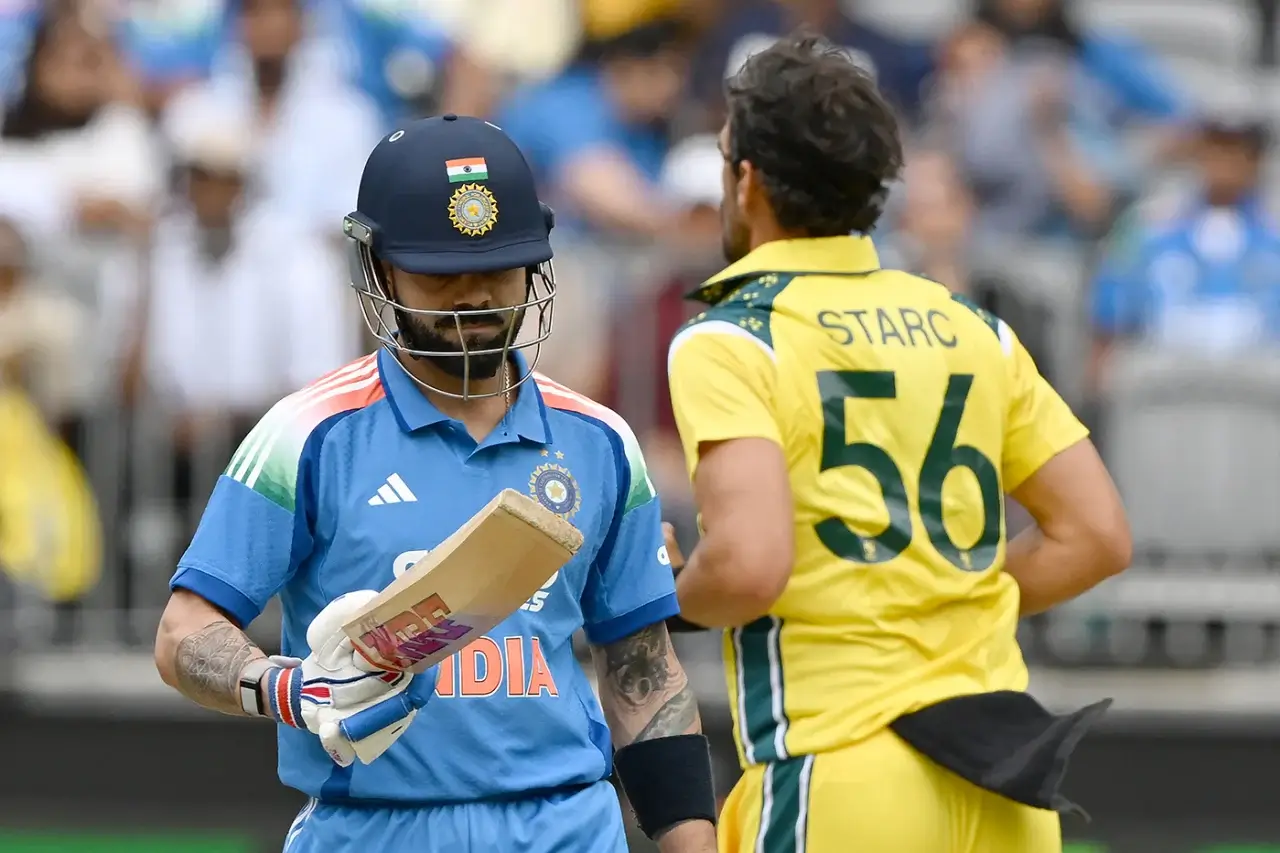Travis Head chose red-ball cricket to prepare for the Ashes. Kuldeep Yadav returned home to prepare for the South Africa Tests. Both moves show players prioritise Test readiness over white-ball games. They highlight modern cricket’s scheduling and tactical demands.
Head will play a Sheffield Shield match for South Australia next week. Kuldeep joins India A for a four-day game at Bengaluru’s Centre of Excellence. Both players use these games to tune technique and timing. They aim to sharpen skills specific to the demands of red-ball cricket.
Role of Travis Head for Australia
Travis Head plays as a dynamic left-handed batter in Australia’s Test lineup. He bats mainly at number five and brings counterattacking impetus. Head shifts momentum through quick scoring and aggressive stroke choices. His presence forces bowlers to adjust lines early under pressure.
Selecting Head for the Test middle order gives Australia an extra attacking option.
He solves selectors’ need for a batter who can reverse pressure fast. In conditions that support bounce and seam, Head still finds boundaries consistently. He also adds slip fielding stability and occasional part-time spin options.
Heading into the Ashes, a red-ball tune-up in Sheffield Shield sharpens his basics. Match practice gives him time to read red seam and bounce again. It also rebuilds timing after a lean white-ball run this month. The preparation is crucial for facing England’s disciplined pace and varied bowling attack. The head’s role is not just scoring. It is about shifting match tempo under Test pressure often. That makes his Sheffield Shield stint a tactical advantage for Australia’s planning.
Head’s short-term gains from Shield cricket (≈140 words)
Four-day cricket restores Head’s red-ball instincts quickly and reliably. He will face longer spells and improved line-and-length repeatedly. That helps him time late movement and change tempo tactically. Shield bowling attacks replicate Test-class bowlers and skill sets.
Match situations will test his shot selection under fatigue and variable bounce. He will practice leaving fuller balls and resisting short-ball panic. Those repetitions translate directly to improved minutes in Test innings. His selection for the Ashes could depend on this restored form.
Coach and selectors value minutes over net practice now. Competitive overs offer rehearsal for longer innings and situational batting. Head’s tempo control and finishing instincts sharpen faster in red-ball matches. That is the primary short-term benefit.
Role of Kuldeep Yadav for India
Kuldeep Yadav now prepares for India’s Test series against South Africa at Kolkata. He is a left-arm wrist-spinner who reliably adds variety to India’s attack. Kuldeep brings arm spin, wrong-un variation, and the ability to extract bounce. He challenges batters with turn and subtle flight changes.
In India’s Test plans, Kuldeep offers a contrasting option to conventional finger spinners. He proves useful on pitches that grip and offer lateral movement. His wrist-spin can break set partnerships with sudden turn and pace change. It also offers tactical matchups against aggressive batters.
Returning to India A ensures Kuldeep faces extended red-ball spells and tailored match scenarios. The four-day game will test his endurance, length control, and ability to bowl long spells. That helps him convert limited overs craft into consistent Test-match glue. The management prioritized his red-ball preparation.
Kuldeep’s role is to complement the frontline spinners and add wicket-taking threat. This role is crucial against South Africa’s strong batting core and their pace options.
Kuldeep’s red-ball focus and workload building
Kuldeep needs long spells to fine-tune release points and rhythm for Tests. Bowling extended overs improves his control over drift and dip consistently. It forces him to vary pace subtly without losing accuracy. India A matches offer that necessary span and tactical adversity.
He will practice setting up batters over multiple overs and using fields strategically. This rehearsal helps in crafting dismissals rather than relying on surprise alone. It also conditions his body for back-to-back long spells. Overall, the India A stint builds both skill and stamina for the Tests.
Impact on Australia and India squads
Releasing Head and Kuldeep shifts immediate squad balance for short white-ball games. Australia’s T20 side will miss Head’s aggressive lower-middle batting and unique counterpunching. India’s T20 group loses wristspin variety and a potential middle-over wicket option. Each team must adapt by reshuffling roles quickly in the short term, like New Zealand.
For Australia, adding Ben Dwarshuis offsets the seam balance slightly but not batting control at five. The T20 attack will rely more on pace variations and domestic power hitters now. India will lean on domestic or backup spinners like Varun Chakaravarthy and Washington Sundar for control. Rotations test bench strength and bench depth becomes vital.
However, the long-term effect on Test outcomes outweighs these short-term perturbations. Both teams prioritise Test readiness because these tours represent national ambitions and ranking stakes. The released players target peak form for multi-match red-ball tests rather than one-off white-ball gains.
Squad management now hinges on workload science, role clarity, and ensuring backups get specific tasks. These moves also signal trust in domestic systems to fill short gaps temporarily.
Short-term tactical adjustments each side must make
Australia may push someone else into a more attacking role at number five. They could favour an all-format bat to cover immediate T20 needs. Bowlers will change plans to compensate for missing Head’s late hitting. India will test combinations with backup wrist or finger spinners in middle overs. Field setups and death plans will be tweaked proactively.
Both sides must integrate replacements seamlessly before the next T20s. Clear role cards for each substitute reduce confusion. Coaches will prioritise match simulations to practice these altered scenarios. That helps maintain tempo and minimise disruption.
How important is the Ashes for Australia?
The Ashes is Australia’s highest priority Test contest every cycle. It carries deep historical weight for fans, players, and selectors alike. Winning or retaining the Ashes shapes careers and national cricket narratives for years ahead. Australian selectors therefore prepare aggressively with red-ball matches and strong domestic readiness. Selection choices for the Ashes reflect more than form; they reflect long-term balance and temperament.
Australia seeks batters who can withstand prolonged spells and bowlers who can consistently extract bounce. The inclusion of players like Head aims to add game-changing potency in the middle order. Ashes matches also influence ICC Test rankings and future scheduling confidence.
Players use domestic matches as final dress rehearsals before facing England’s highly attuned attack. The whole cricket system – from selectors to physios – gears into peak performance mode.
Tour readiness, psychological framing, and supply of match minutes are all crucial components.
For Australia, Ashes success affects contracts, captaincy confidence, and public momentum far beyond immediate points or prizes.
What a good Ashes result does for Australian cricket?
A strong Ashes victory boosts selectors’ freedom in future selections significantly. It enhances player marketability and strengthens domestic competitions like Sheffield Shield. Confidence gained from Ashes wins often carries into other formats season-long. It helps prioritise youth development fabrics and creates stable leadership choices.
Financially and culturally, Ashes success keeps crowds engaged and pathways funded. It underpins coaching programmes and inspires grassroots interest. That combined impact shows why Ashes preparation often trumps short-format fixtures temporarily.
How important is the South Africa tour for India?
India’s tour of South Africa is crucial for Test credentials abroad. South African conditions test balance across pace, bounce, and turn aggressively. Success there proves India’s adaptability and strengthens their global Test reputation. It also prepares players for challenging overseas conditions in future cycles.
Selectors treat the tour as an exam for bench strength and tactical depth. Bowlers must handle pace movement and reverse swing regularly. Batters must handle short-pitched barrage and variable bounce smartly. The series outcome affects India’s ICC ranking and confidence in overseas tours.
For India, red-ball readiness matters more than short-term T20 wins on foreign soil. Releasing Kuldeep for India A reflects that priority clearly. Management signals that Test performance in South Africa is central to national aims this season. The tour thus shapes selection philosophies for years to come.
Winning or performing strongly in South Africa would also inform leadership continuity and broader squad evolution for longer formats.
Long-term benefits India seeks from a solid South Africa tour
A strong tour secures confidence for future away blocks and crown trials. It builds trust in younger players who must now lead overseas. This validates spinning and seam strategies under hostile conditions. It also increases India’s leverage in ICC ranking discussions and future scheduling negotiations.
Ultimately, the tour’s lessons refine selection algorithms and workload strategies for multi-format calendars. Those improvements help India maintain red-ball dominance globally.
Conclusion
Releasing Travis Head and Kuldeep Yadav from their T20 duties reflects modern cricket priorities. Both players need red-ball minutes to hone Test-specific skills and rhythm. Their short departures create tactical gaps, but teams can cover them with prepared backups. The bigger aim is Test success and long-term national goals.
For Australia, the Ashes demands intense red-ball readiness and squad precision. For India, the South Africa tour tests overseas adaptability and selection strength. These series influence rankings, player markets, and coaching decisions in the long term. Both nations balance immediate white-ball needs with red-ball ambitions strategically.















